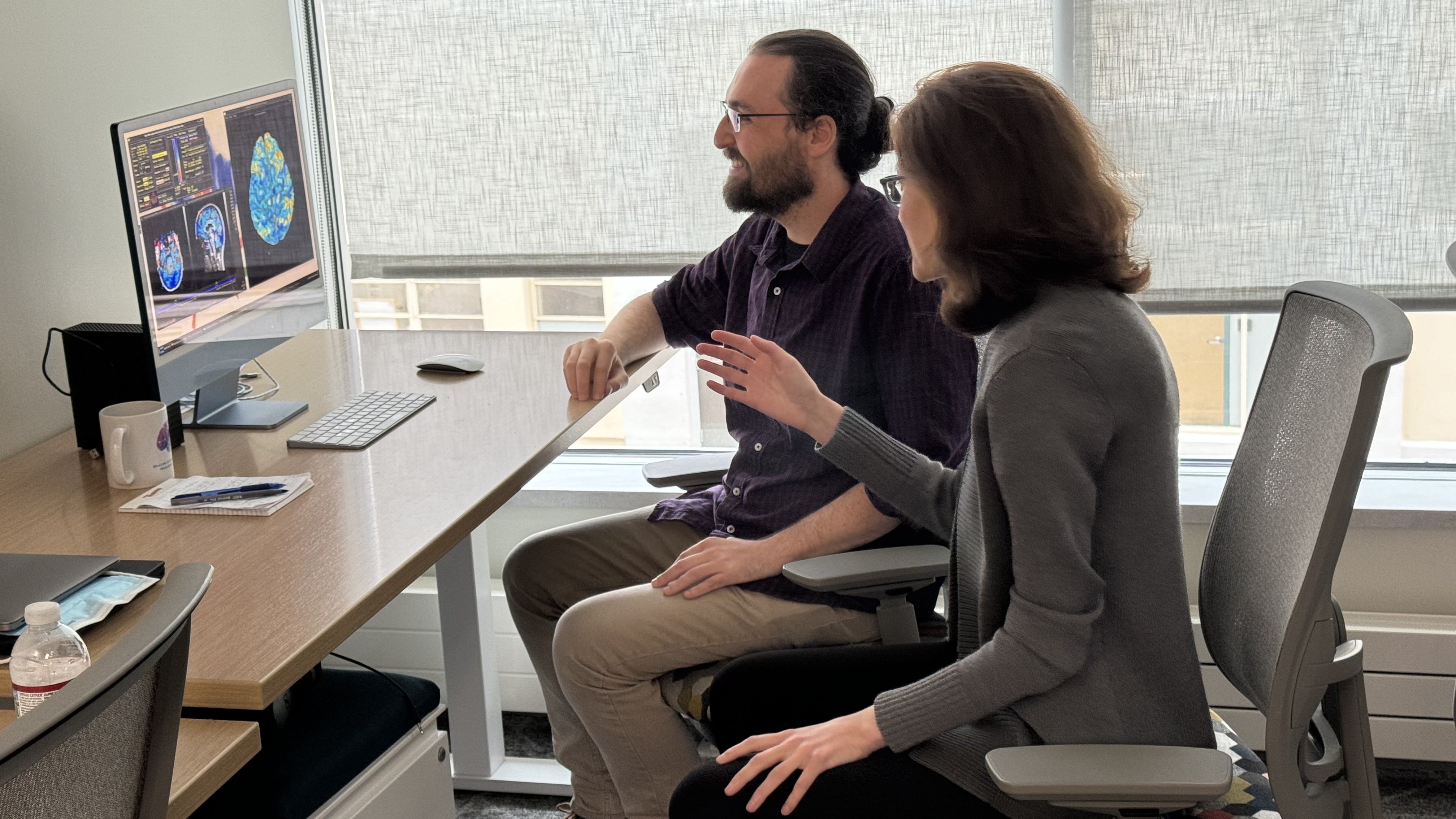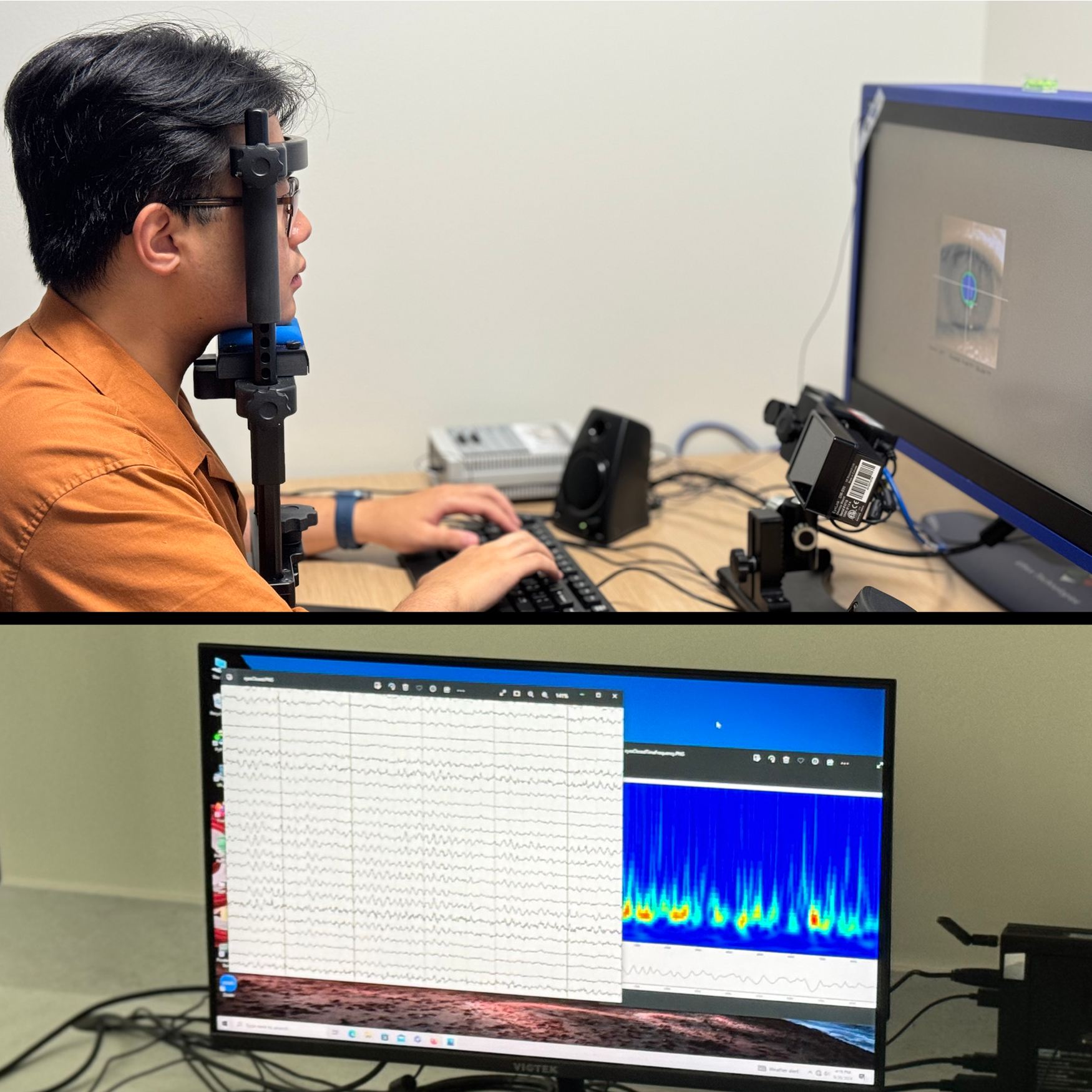Scientist Profile – Professor Rachel Denison
Investigating how the dynamics of visual attention shape perception
Rachel Denison, Ph.D. – Assistant Professor of Psychological & Brain Sciences
The Denison Lab studies visual perception, attention, and decision-making—with a focus on temporal dynamics—to understand how the human brain generates our ongoing perceptual experience.
Professor Rachel Denison (Cognitive Neuroimaging Center, Center for Systems Neuroscience) talked about her research, how Alan Alda inspired her interest in neuroscience, and her love of old-timey musicals.

How would you describe your research and the goals of your lab?
We are interested in the neural mechanisms of visual perception and attention. We ask questions like: How do we see the world around us? How do we pay attention to important things in the visual environment? Why is it that we sometimes miss things that we’re not paying close enough attention to? And how can we consciously perceive anything at all?
Can you describe a study in your lab that attempts to answer these questions?
A lot of our work in the lab right now studies how we pay attention in a dynamic environment. When we’re driving a car, for instance, we must process a lot of complicated visual information. The challenge is that not only is there a lot of information at any given moment—a much greater amount than we are able to process—but the information also keeps changing over time. One of our major projects investigates how we use our ability to predict what will occur to pay closer attention at moments when we’re about to receive information critical for our task. When you’re driving, for instance, you might anticipate that you’re about to change lanes, and so you pay closer attention in that moment to make sure no cars are coming up from behind you on either side. The question is, how do we change our attention across time so that we can be ready when important information is about to appear?
Some of our studies show that, in these critical moments of attention, basic aspects of our visual perception improve, which enhances our ability to process important information. Interestingly, however, in the moments just before and after that critical moment of attention, the quality of our perception actually worsens, dropping below a neutral baseline. This demonstrates that our brain has limits in its ability to process information across time, which we can overcome to some degree by attending at critical moments. We’re currently studying how the brain does this while also working to understand the underlying sources of these temporal limits in the brain.

What are the potential applications of this research?
Whether it’s driving cars, or flying planes, or engaging in high-performance activities like sports, there are all kinds of situations where people must process time-varying information, and understanding how we do that can help us determine how to deliver information in a way that they can more effectively process. When, where, and how fast do we deliver that information? The questions around information delivery become even more pronounced as technologies like virtual and augmented reality are integrated into more of our devices and displays—questions like, how can we best interface these technologies with people’s natural attentional dynamics and rhythms?
When did you know you wanted to be a neuroscientist?
I got interested in neuroscience at around age 11 or 12, and this was because I just happened to walk by the television during an episode of a TV show called “Scientific American Frontiers” hosted by Alan Alda. It was in college that I started gravitating toward visual perception. I was fascinated by perception in general and how our brain generates for us this ongoing experience of the world. And in terms of neural mechanisms, vision is the sensory modality we know the most about—so I knew I could build on that existing knowledge to explore new questions.
What do you like about working at Boston University?
One thing I love about the Department of Psychological & Brain Sciences at BU is there are many people who are interested in understanding both the brain and behavior and in using computational tools and models to understand the relationship between them. I think it’s such a powerful approach to neuroscience and a lot of my BU colleagues share that philosophy, which makes it fun to discuss research with them.
What is your favorite vacation destination?
Greece. I went there one time for five days, and I thought if I ever could take a three-month vacation somewhere, that’s where I would go.
What are your favorite hobbies outside the lab?
I like going to the theater. I especially love old-timey musicals and anything by Stephen Sondheim. My parents were professional musical theater actors for some time, so there was a lot of singing in my house growing up.
Interview conducted and edited by Jim Cooney.